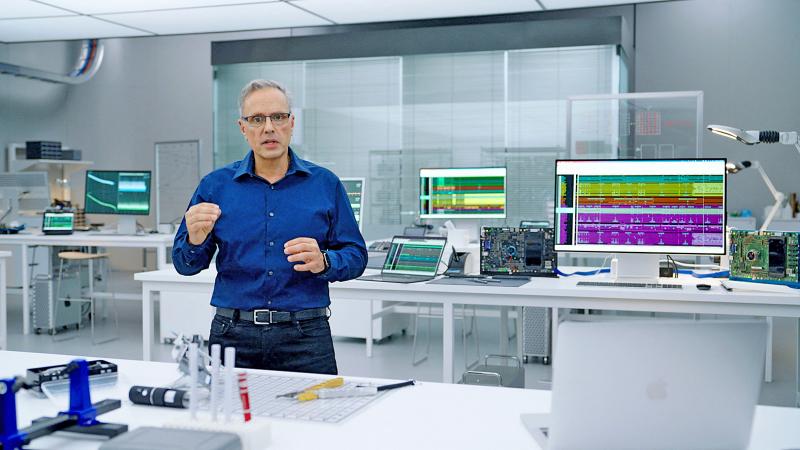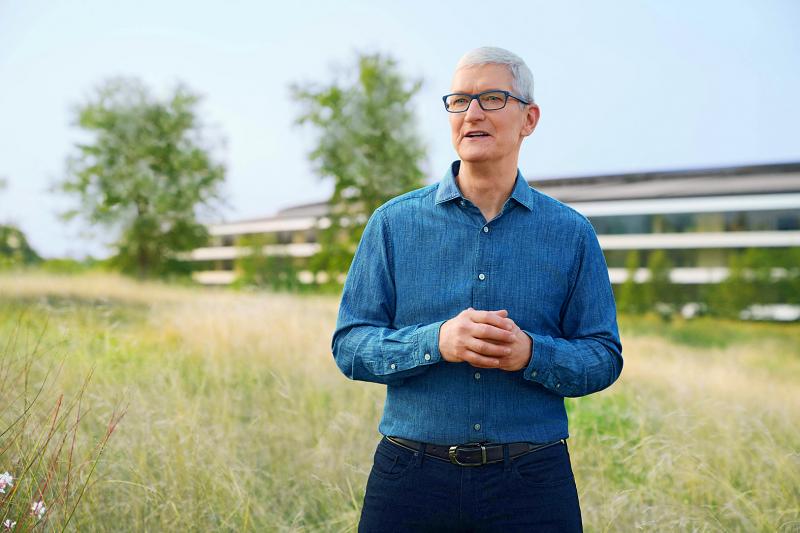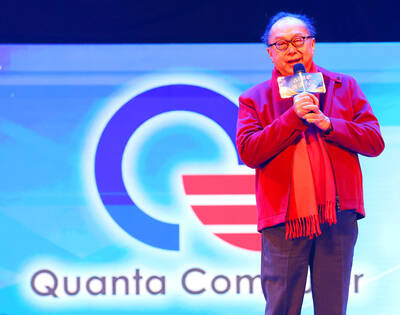Apple Inc on Monday took the most aggressive step yet to strip Intel Corp chips from its computers, announcing more powerful homegrown Mac processors alongside a total revamp of its MacBook Pro laptop computers.
The company showcased the chips at an event called “Unleashed,” which also included its latest audio products.
The new components, called the M1 Pro and M1 Max chips, are 70 percent faster than its M1 predecessors, Apple said.

Photo: AFP / Handout / Apple Inc
It also unveiled a redesigned MacBook Pro, adding larger screens, MagSafe charging and better resolution.
With the new processors and devices, Apple is aiming squarely at the high-end chips that Intel has provided for the MacBook Pro and other top-end Macs for about 15 years. Last year, Apple started transitioning its low-end Macs to its own M1 Apple Silicon chip.
However, the new chips are a bolder stroke, aiming at far outclassing Intel’s highest-performing products.

Photo: AFP / Brooks Kraft / Apple Inc
The chips include 10-core central processing units, up from the eight in the M1 chip. The 10 cores are split into eight high-performance cores and two cores for tasks that require less energy, compared with four high-performance and four low-performance cores in the M1.
Apple has also improved the graphics performance for the M1 Pro and M1 Max, which come with 16 and 32-core graphics chips respectively, up from the seven or eight-core options offered with the M1 Macs.
Graphics performance with the M1 Max is as much as four times faster than on the earlier M1 chip, while the M1 Pro is twice as fast, Apple said, adding that it is also 13 times faster than earlier Intel models.
The M1 Pro supports 32GB of memory, while the M1 Max has up to 64GB, up from 8GB or 16GB offered with the M1.
The new chips are at the center of the most significant update to the MacBook Pro since 2016. The new model comes in 14.2-inch and 16.2-inch screen sizes, and — like the latest iPad Pro — the displays use miniLED panels. That technology allows for improved color reproduction.
The screens also have 24 percent thinner borders on the side and a 60 percent thinner border at the top, thanks to a new display cutout. That feature, also called a “notch,” makes the display look more like the one on an iPhone.
The new models have an updated, boxier look and lack the controversial Touch Bar, the touch-screen strip introduced with the 2016 redesign. Apple replaced the Touch Bar with a new circular fingerprint scanner and larger physical function keys.
Apple has also restored three ports that users missed after they were removed five years ago: the HDMI port, an SD card slot and MagSafe charging.
The displays also include ProMotion, a feature that allows the screen refresh rate to reach higher levels for a smoother overall experience. Apple added a similar feature to the iPhone 13 Pro and iPhone 13 Pro Max, which became available last month.
The company has added a 1080 progressive-scan video-chat camera, improving a component that users of earlier MacBook Pros have found subpar.
One challenge that Apple might face with its new MacBook Pro is the ongoing chip shortage and supply-chain slowdown sparked by the COVID-19 pandemic.
The new computer went on sale on Monday and is due to hit stores next week, starting at US$1,999 for the 14-inch model and US$2,499 for the 16-inch model, but shipment delays have hampered other recent launches.

Intel Corp chief executive officer Lip-Bu Tan (陳立武) is expected to meet with Taiwanese suppliers next month in conjunction with the opening of the Computex Taipei trade show, supply chain sources said on Monday. The visit, the first for Tan to Taiwan since assuming his new post last month, would be aimed at enhancing Intel’s ties with suppliers in Taiwan as he attempts to help turn around the struggling US chipmaker, the sources said. Tan is to hold a banquet to celebrate Intel’s 40-year presence in Taiwan before Computex opens on May 20 and invite dozens of Taiwanese suppliers to exchange views

Application-specific integrated circuit designer Faraday Technology Corp (智原) yesterday said that although revenue this quarter would decline 30 percent from last quarter, it retained its full-year forecast of revenue growth of 100 percent. The company attributed the quarterly drop to a slowdown in customers’ production of chips using Faraday’s advanced packaging technology. The company is still confident about its revenue growth this year, given its strong “design-win” — or the projects it won to help customers design their chips, Faraday president Steve Wang (王國雍) told an online earnings conference. “The design-win this year is better than we expected. We believe we will win

Power supply and electronic components maker Delta Electronics Inc (台達電) yesterday said it plans to ship its new 1 megawatt charging systems for electric trucks and buses in the first half of next year at the earliest. The new charging piles, which deliver up to 1 megawatt of charging power, are designed for heavy-duty electric vehicles, and support a maximum current of 1,500 amperes and output of 1,250 volts, Delta said in a news release. “If everything goes smoothly, we could begin shipping those new charging systems as early as in the first half of next year,” a company official said. The new

Quanta Computer Inc (廣達) chairman Barry Lam (林百里) is expected to share his views about the artificial intelligence (AI) industry’s prospects during his speech at the company’s 37th anniversary ceremony, as AI servers have become a new growth engine for the equipment manufacturing service provider. Lam’s speech is much anticipated, as Quanta has risen as one of the world’s major AI server suppliers. The company reported a 30 percent year-on-year growth in consolidated revenue to NT$1.41 trillion (US$43.35 billion) last year, thanks to fast-growing demand for servers, especially those with AI capabilities. The company told investors in November last year that